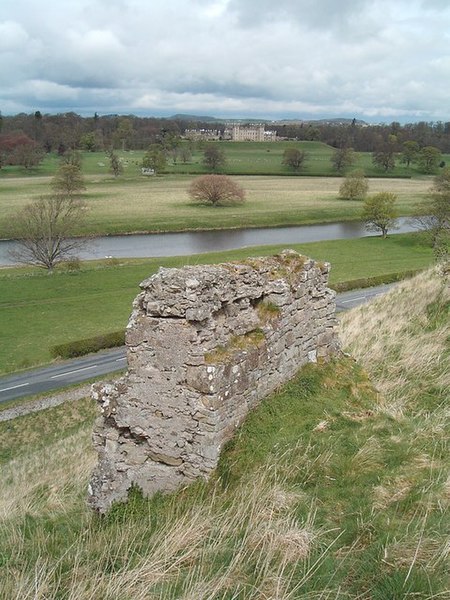Roxburgh Castle
Buildings and structures completed in the 12th centuryCastles and forts of the Rough WooingCastles in the Scottish BordersCategory B listed buildings in the Scottish BordersDemolished buildings and structures in Scotland

Roxburgh Castle is a ruined royal castle that overlooks the junction of the rivers Tweed and Teviot, in the Borders region of Scotland. The town and castle developed into the royal burgh of Roxburgh, which the Scots destroyed along with the castle after capturing it in 1460. Today the ruins stand in the grounds of Floors Castle, the seat of the Duke of Roxburghe, across the river from Kelso.
Excerpt from the Wikipedia article Roxburgh Castle (License: CC BY-SA 3.0, Authors, Images).Roxburgh Castle
Roxburgh Castle,
Geographical coordinates (GPS) Address Nearby Places Show on map
Geographical coordinates (GPS)
| Latitude | Longitude |
|---|---|
| N 55.596388888889 ° | E -2.4566666666667 ° |
Address
Roxburgh Castle
Roxburgh Castle
TD5 8LP
Scotland, United Kingdom
Open on Google Maps









